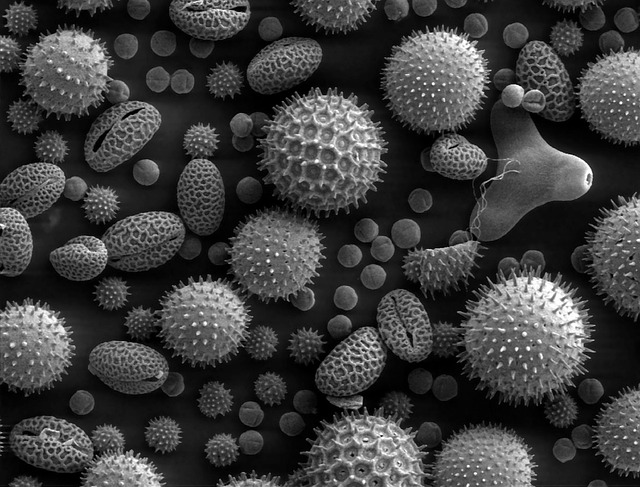For most of us, influenza infection resolves on its own but in many cases, it can have severe outcomes if ignored. Therefore, scientists across the globe are looking for some effective method to prevent influenza infection. Many pieces of research have been carried out where the scientists are developing antibodies to efficiently target the influenza virus.
The major reason for failure in
developing an effective treatment method against the influenza virus is its
constantly changing nature, wherein new strains develop regularly. So if you
had influenza in the past with say strain-A, your body will have antibodies
against it. But next time when you are infected again with some other strain of
influenza your body will recognize it as new. This is the reason that no
universal vaccine is available till now. However, recent research work by Daniel
Stadlbauer et.al embarks a new ray of hope for the development of a universal
vaccine against the influenza virus.
Antibody Targeting Neuraminidase
There are multiple influenza virus strains that require designing a new vaccine almost every year. This is the reason vaccine shots against flu are needed to be taken every year, unlike any other infection. But imagine what if we have an antibody that can target all these strains? Such an antibody can be used to design a universal vaccine that can target all strains of influenza including, swine and other avian influenza viruses.
There are certain protein molecules on the surface of the virus which help it to enter the host cells or to replicate in the host body. One such protein is ‘Neuraminidase’ which is the center of the present study. The researchers found a unique antibody that targets the conserved region of this protein, eventually blocking the viral replication and preventing the further spread of infection.
Till now, Tamiflu a well-known drug is used for flu treatment which works by targeting neuraminidase. But as discussed earlier, the virus exists in multiple strains due to variability in neuraminidase protein; in such cases, the existing drugs are not that effective. Moreover, the increasing burden of drug resistance is also a cause of concern. The recent finding of a unique antibody capable of targeting multiple influenza strains can help in overcoming the drawbacks of existing treatment methods.
The researchers tested blood samples from flue patients and observed unique behavior. They found that apart from the common activity of antibody against hemagglutinin, there were some other antibodies targeting something else. Upon investigating three of these unknown antibodies, the researchers found that the antibodies were blocking the neuraminidase activity in all types of known flu viruses. Scientists were amazed by results as for the first time some antibodies have shown activity against a wide range of virus subtypes. Otherwise earlier the activity was limited only to the certain subtype of influenza. But in the present study, the antibodies were able to cross between influenza A and influenza B, showing an extensive range of activity.
Antibody – 1GO1
and mice studies
To analyze the effectiveness of antibodies against the severe cases of flu, researchers tested the antibodies in mice. These mice were given a lethal dose of influenza virus before the introduction of antibodies. The results obtained were astonishing as all three antibodies showed positive results with one antibody named-1GO1 capable of protecting against more than 11 strains of influenza (both human and non-human strains)
It is suggested that for effective use of Tamiflu, it should be administered within 24 hours of infection. However, with the help of present antibodies identified, the administration even after 72 hours of infections showed positive results, which is quite remarkable. Thus, a similar drug based on these antibodies can be designed to treat influenza infection but to do so scientist need to further understand how these antibodies actually interfere in neuraminidase activity.
Structural and
functional analyses
To understand the underlying mechanism behind the antibody-based blocking of viral replication, scientists carried out the structural and functional analyses. They mapped the structures of the antibodies bound to neuraminidase. The findings showed that each of the antibodies had a loop-like structure that slides into the active site of neuraminidase just like a stick between the gears. This interferes with the normal functioning of neuraminidase thereby blocking the release of new virus particles from the infected host cells. This further breaks the entire replication cycle important for the spread of infection.
The most noticing part of the findings was the insertion of a loop by antibodies within the conserved active site without contacting the hypervariable regions in the surrounding. This allowed targeting a broad range of neuraminidase in different influenza viruses than any of the earlier methods.
The study reveals that using these antibodies can provide protection from a wide range of influenza virus strains as it targets the conserved regions of the neuraminidase active site. These conserved regions remain almost the same even across the distantly related virus strains. Thus, using these antibodies can help in universal vaccine development against influenza.
Till now, neuraminidase as a target for the vaccine has
been ignored for long but the present study highlights its importance. To take
this ahead, researchers are working on developing new and improved treatments
and vaccines for influenza based on antibody 1G01.



